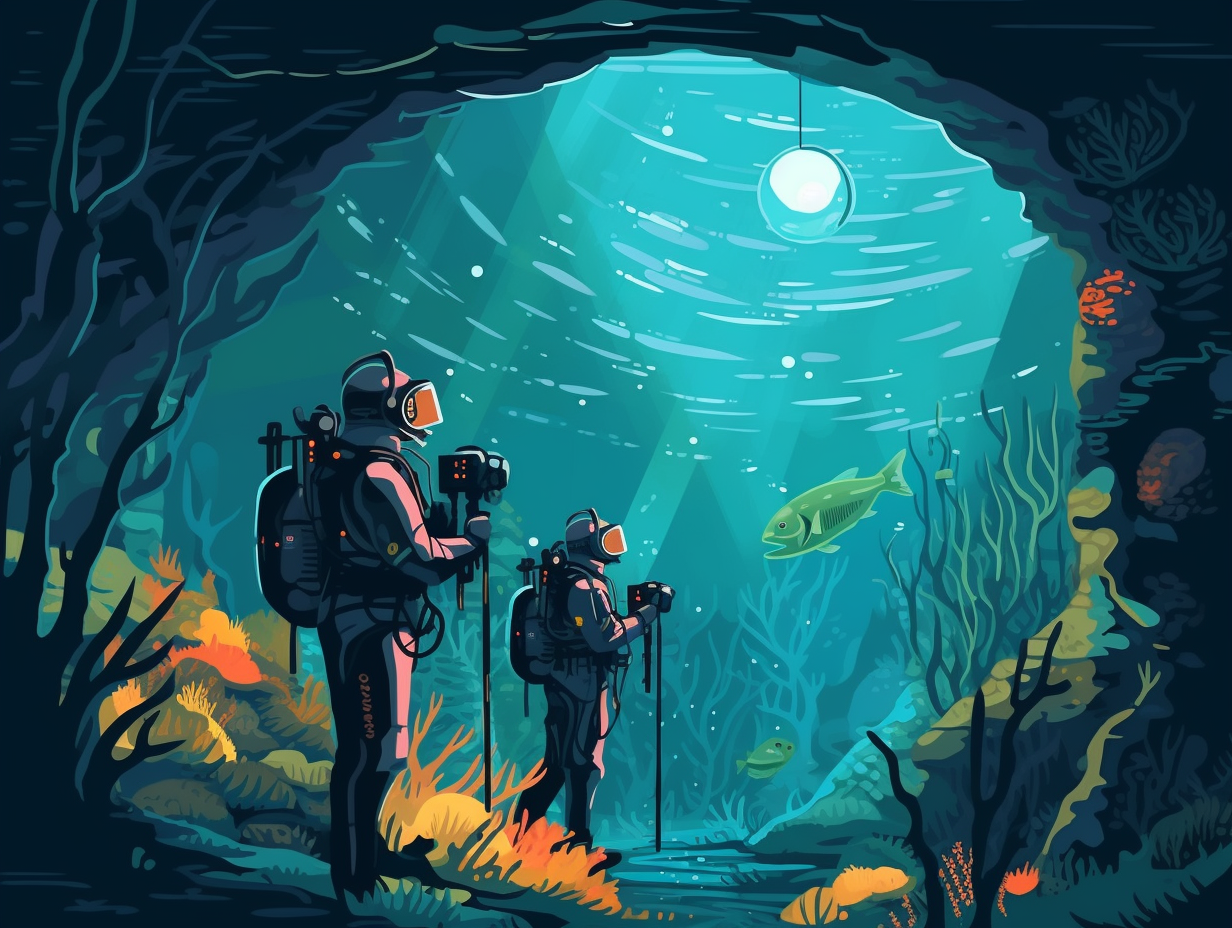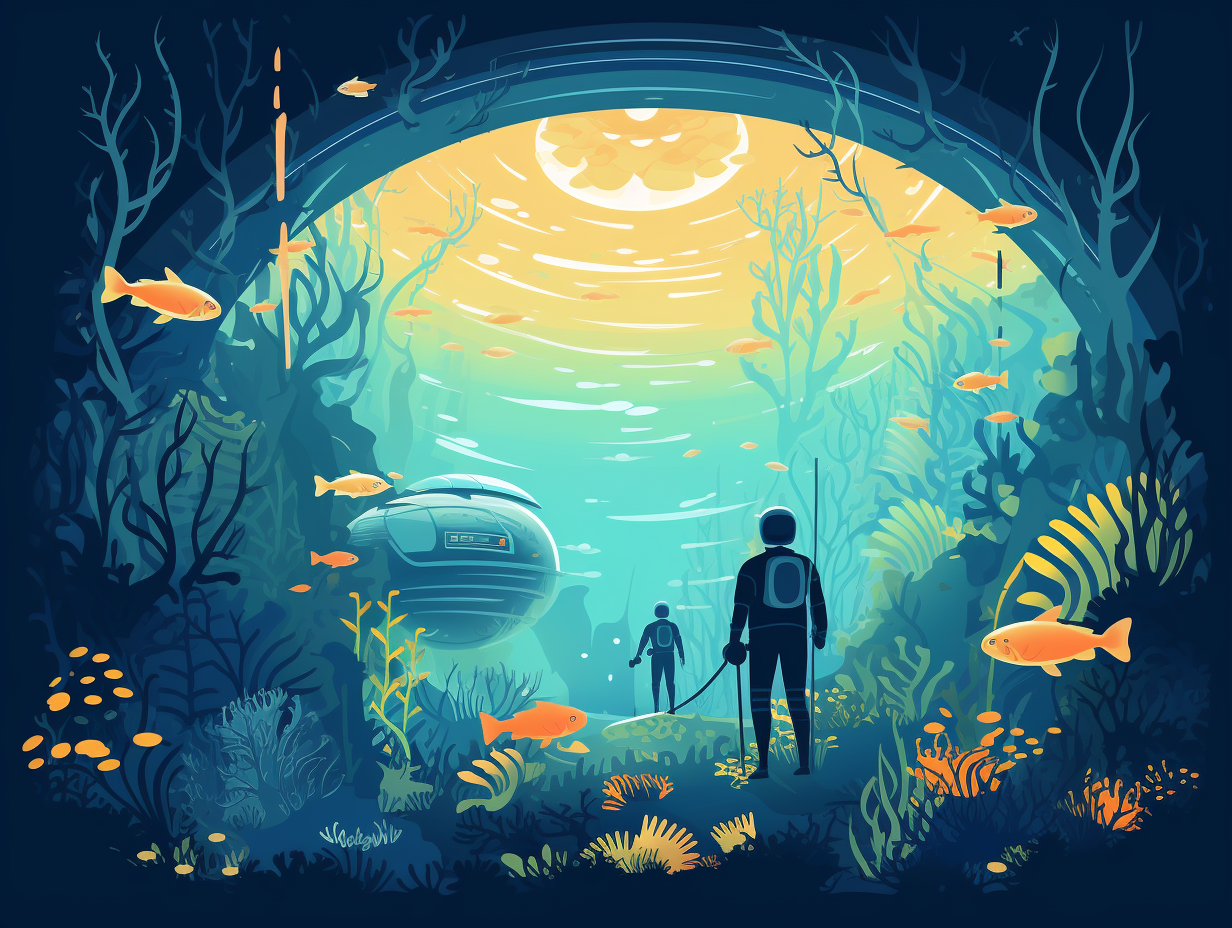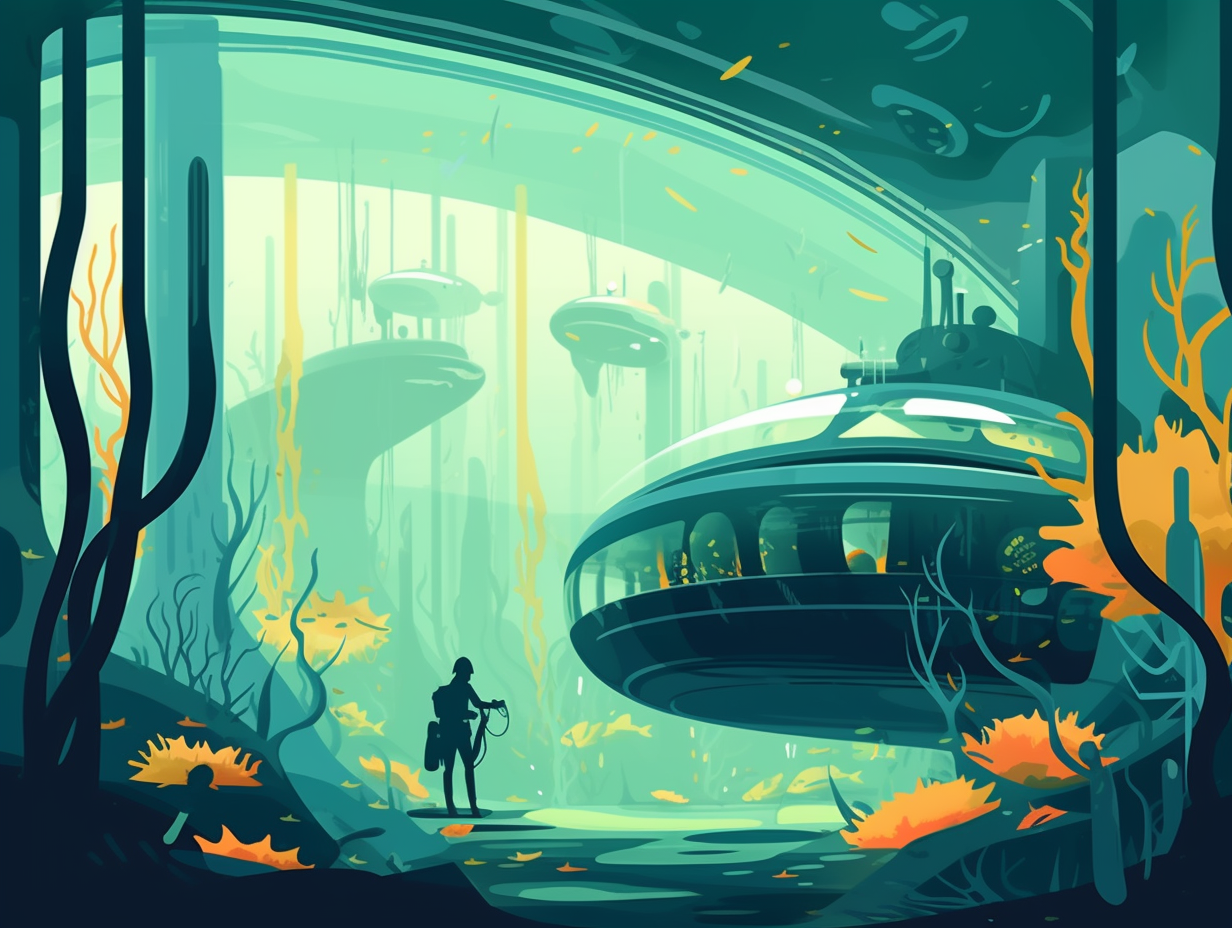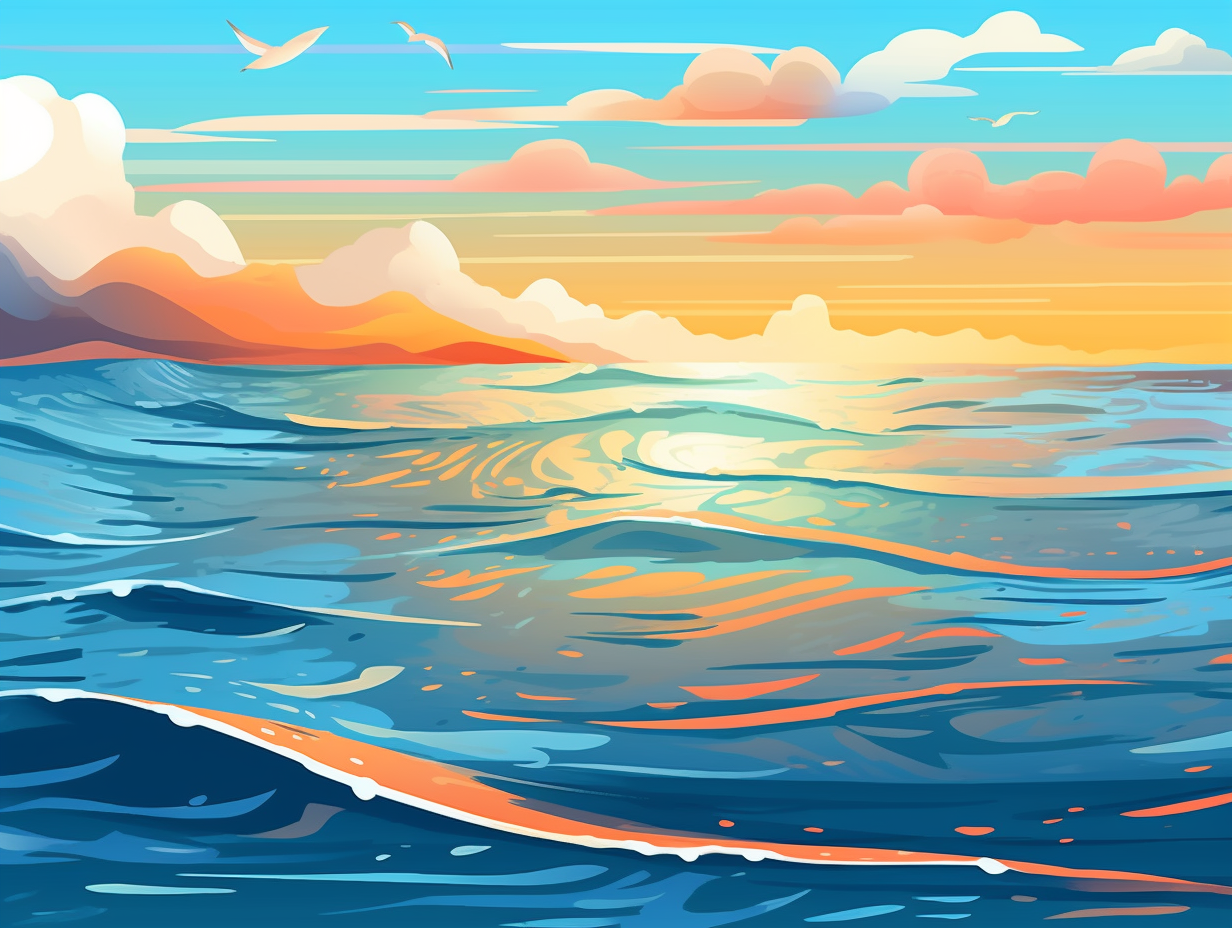Discover the Depths: Top 13 Incredible Fun Facts About the Mariana Trench

1. Deep-Sea Coffee Shop
Imagine the Mariana Trench as a deep-sea coffee shop with chimney stacks brewing up mineral-rich mochas to go: The Mariana Trench is home to towering "smoker" hydrothermal vents reaching 9 meters high, where unique ecosystems of creatures thrive on the life-sustaining brew that pours from within, all happening near its deepest point, the Challenger Deep, which bottoms out at a staggering 10,935 meters (35,876 feet) deep.
Source => oceanservice.noaa.gov
2. Nemo's Squashing Adventure
If Finding Nemo took a wrong turn and ended up in the Mariana Trench, our fishy friends would have a squashing good time: the water pressure at the bottom of the trench is a bone-crushing eight tons per square inch, making it difficult to determine if fish can survive there—but scientists have spotted unique lifeforms like shrimp-like amphipods and holothurians in this deep, dark abyss.
Source => deepseachallenge.com

Did you know the Pacific Ocean is so massive that it could fit the Atlantic Ocean twice and still have room to spare? Dive into more fun facts about this colossal ocean, including its deepest secrets, by clicking "read more"!
=> Fun Facts about The-Pacific-Ocean
3. Everest's Underwater Challenge
Imagine if Everest went deep-sea diving and still couldn't reach the surface: The Mariana Trench's Challenger Deep, the deepest known point on Earth, plunges 36,070 feet below sea level, dwarfing Mount Everest's 29,029-foot altitude and leaving its peak over 7,000 feet submerged!
Source => inshorts.com
4. Exclusive Ocean VIP Club
Step aside, celebrities' favorite spa retreats: the Mariana Trench's deep and exclusive nature has attracted only the most daring 27 VIPs since 1960! The Challenger Deep, known as Earth's ultimate underwater penthouse suite, first welcomed Don Walsh and Jacques Piccard in 1960, and most recently rolled out the ocean floor carpet for Dawn Wright in September 2022, making her the first Black person to dive into this invitation-only abyss.
Source => en.wikipedia.org

5. Moon Base 2.0: Mariana Edition
If you thought living on the moon was tough, try building a base on this small piece of real estate: The Mariana Trench's Challenger Deep is the deepest point on our planet, plunging to an astonishing 10,920 ± 10 meters (35,827 ± 33 feet), an inhospitable and mysterious zone experts continue to study with their most advanced gadgets.
Source => en.wikipedia.org
6. Pressure Pro Microbes
If you think your deep-sea diving friends are under pressure, just take a look at the Mariana Trench residents: This incredible undersea chasm houses creatures that thrive under 16,000 pounds per square inch of hydrostatic pressure, and a mud sample from Challenger Deep revealed over 200 mind-boggling microorganisms!
Source => fws.gov
7. The Eyeless Fish Horror Movie
Ready for a punchline that's a real dive? Mariana Trench's most popular resident sounds like the title of a B-grade horror flick – "Attack of the Transparent, Eyeless Snailfish" : In reality, the Mariana Hadal Snailfish holds the record for being the deepest living fish species, discovered at a jaw-dropping 27,460 feet below the surface, and thrives in the extreme pressure and darkness of the trench as a top predator.
Source => a-z-animals.com
8. Snailfish: Dive Master
Who needs a depth finder to catch fish when you can simply dive 26,000 feet beneath the sea? In the realm of the Mariana Trench, the snailfish reigns supreme: This record-breaking critter, known as Pseudoliparis swirei, dwells at a whopping 22,600 to 26,135 feet (6,900 to 7,966 meters) below sea level, munching on unsuspecting crustaceans and avoiding predators like they’re going out of style.
Source => geekwire.com
9. Mother Earth's Secret H2O Stash
It's a wet and wild treasure hunt deep down in the Mariana Trench, where Mother Earth has been storing her secret stash of H2O surprises: Seawater seeping into the Earth's crust forms hydrous minerals, which extend up to 20 miles below the seafloor and hold water that potentially impacts the global water cycle. Recent findings show that this process may be four times more extensive and contain three times more water than we previously believed.
Source => newatlas.com

10. Pressure-Loving Bacteria
Dive into the deep end and meet microbes who say "pressure, what pressure?": Scientists found bacteria in the Mariana Trench's Challenger Deep, thriving at a depth of 10,898 meters with genetic adaptations that make them pros at surviving extreme pressure conditions, growing optimally at pressures up to 80 MPa—which is the highest among any organism known!
Source => pubmed.ncbi.nlm.nih.gov
11. The Not-So-Icy VIP Pit
You might expect the Ocean's VIP (Very Important Pit), the Mariana Trench, to be chilling like a polar bear's martini, but surprisingly, it's got a bit of a thermal undercurrent going on: Despite being around 36,000 feet below sea level, the trench avoids freezing temperatures thanks to sluggish currents from polar regions and some geothermal heat, keeping it from turning into an ice-tastic underwater igloo.
Source => physics.stackexchange.com
12. Mariana's Plastic Entanglement
When the Mariana Trench isn't busy auditioning for the role of "Galactic Trash Compactor" in a Star Wars spinoff, it's actually home to a deep-sea menagerie: Coral, jellyfish, and octopus are among the diverse marine life found thriving in this nautical abyss during NOAA's Okeanos Explorer 2016 expedition. However, 17 percent of the plastic images logged in the Deep-Sea Debris Database highlight the concerning role of plastic pollution even in the ocean's most profound depths, serving as an underwater reminder that our waste is quite entangled with these remarkable, remote creatures.
Source => nationalgeographic.org
13. Mother Nature's Ultimate Low Point
In a world where "Go big or go home" seems to be Mother Nature's mantra, the Mariana Trench goes one step further and plummets to the ultimate low: The Challenger Deep, nestled within the southern confines of this trench, clocks in as the lowest of the low points on Earth at a breathtaking depth of 10,920 meters below sea level, due to an unusual geological phenomenon where the oceanic plate descends steeply, seemingly unhindered by its weak attachment to the upper plate, creating a deep dive destination even the bravest of scuba enthusiasts might think twice about.
Source => agupubs.onlinelibrary.wiley.com
Related Fun Facts




















